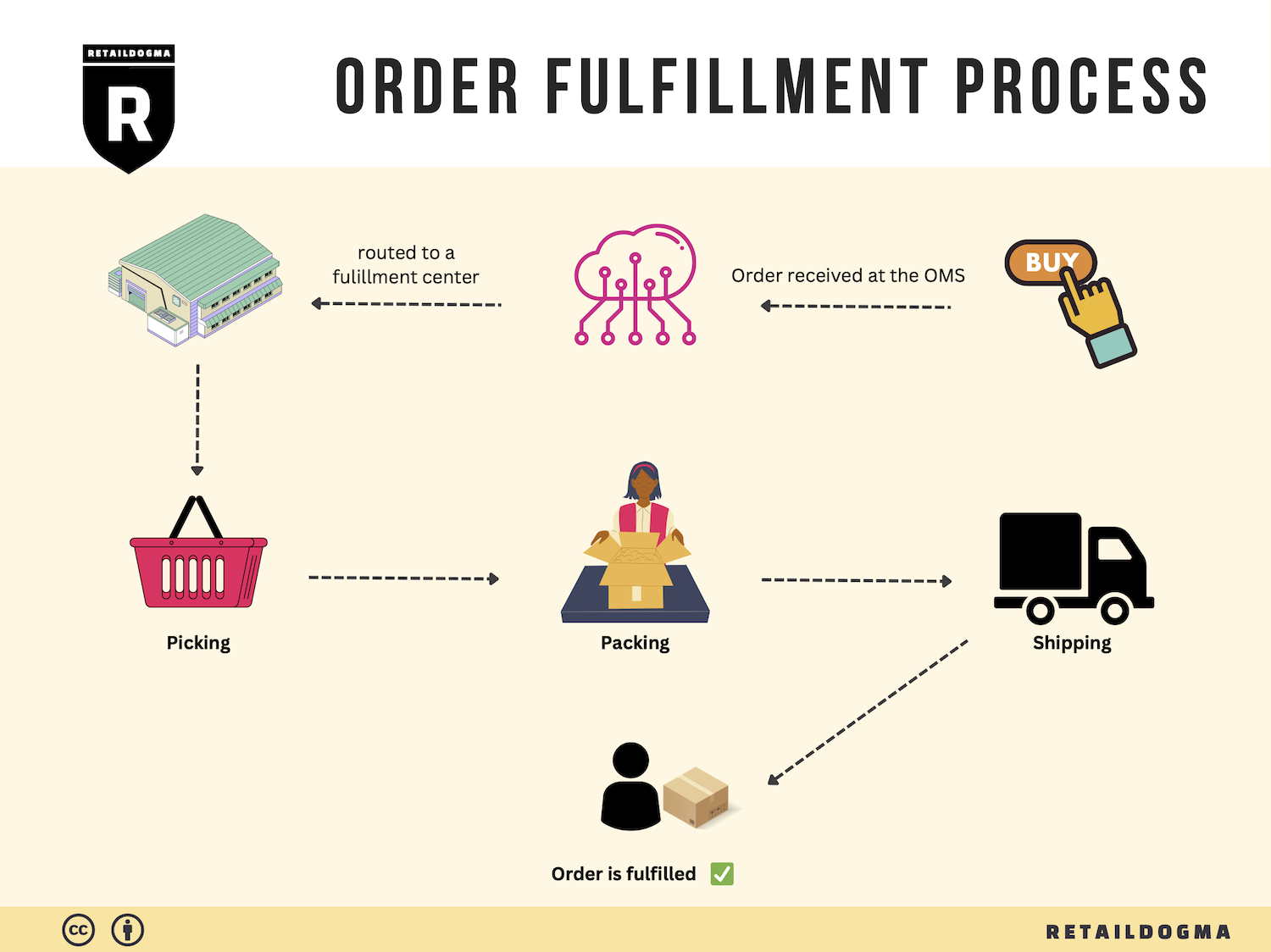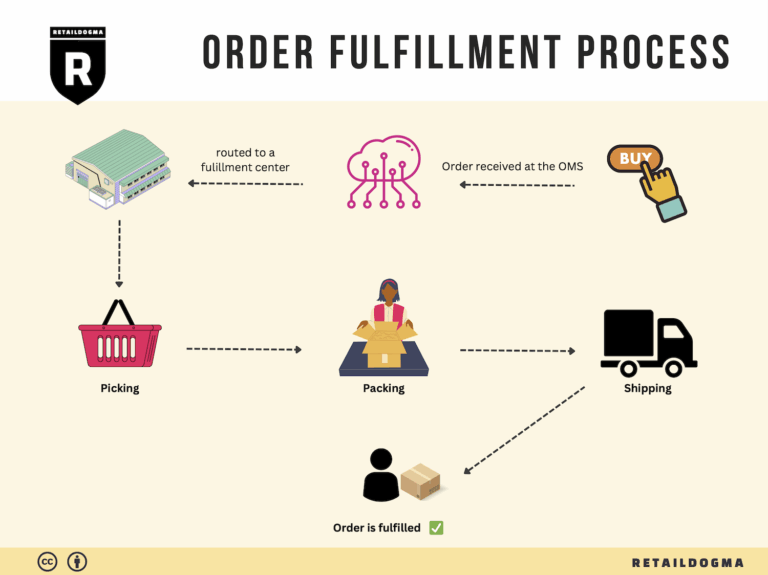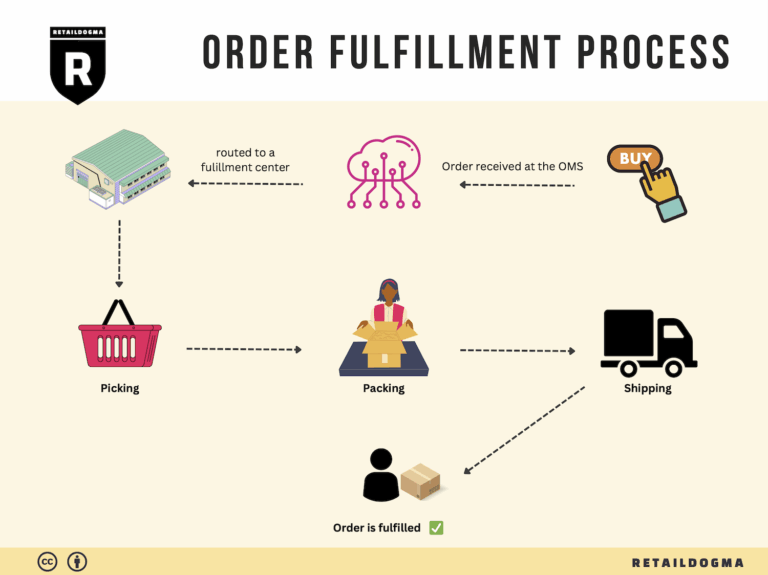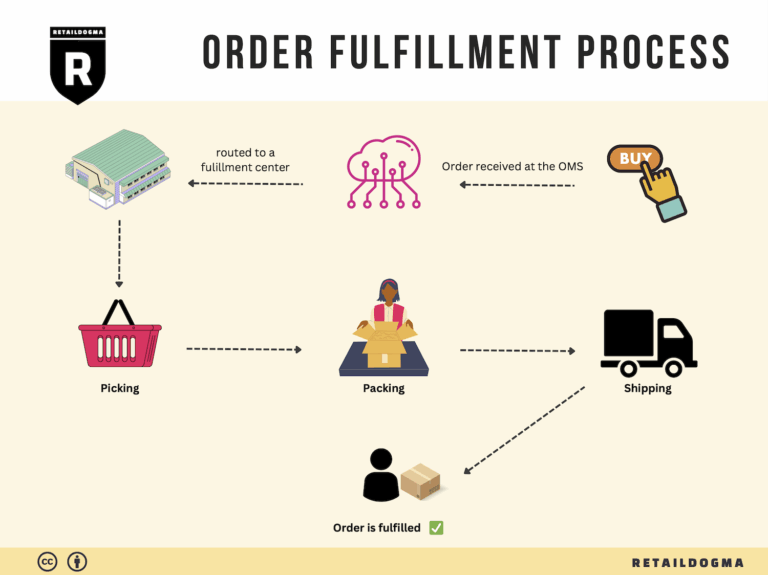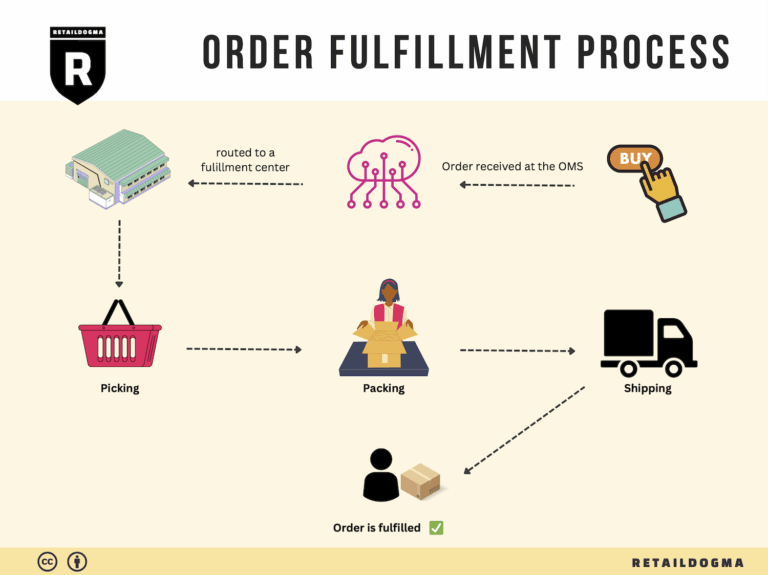How Order Fulfillment Works: A Step-by-Step Guide for Businesses
What is E-commerce Fulfillment? An Introduction for Growing Businesses
Navigating the Challenges of Order Fulfillment
As an e-commerce business owner, you’re likely familiar with the pressure of meeting customer expectations while managing the complexities of packing and shipping orders. The excitement of growing sales can quickly turn into overwhelm as you grapple with inventory management, order processing, and logistics. This is where e-commerce fulfillment becomes a crucial aspect of your operations.
At its core, fulfillment is the process of getting a product from your warehouse to your customer’s doorstep. It encompasses everything from receiving inventory and processing orders to picking, packing, shipping, and handling returns. As your business expands, the stakes become higher, and the efficiency of your fulfillment process can significantly impact customer satisfaction and your bottom line.
Understanding Fulfillment Models
In this guide, we will explore various fulfillment models that can support your growth. You’ll learn about Third-Party Logistics (3PL) providers, which can handle warehousing and shipping on your behalf, and Fulfillment by Amazon (FBA), a popular option that integrates with Amazon’s vast marketplace. Each model has its benefits and drawbacks, and understanding these can help you make an informed choice that aligns with your business strategy.
Core Fulfillment Services
We will also delve into the core services essential for effective fulfillment. This includes inventory management, order processing, packaging, shipping options, and customer service. By understanding these components, you can identify areas where you might need support or improvement.
Choosing the Right Partner
Selecting a fulfillment partner is a critical decision that can affect your operational efficiency and customer experience. This guide will provide insights on what to look for in a fulfillment partner, including technology integration, scalability, and service quality. You’ll also find tips on how to evaluate potential partners based on your specific business needs.
Pricing Considerations
Finally, we will cover pricing structures commonly associated with fulfillment services. Understanding the costs involved will empower you to budget effectively and assess the return on investment for different fulfillment options.
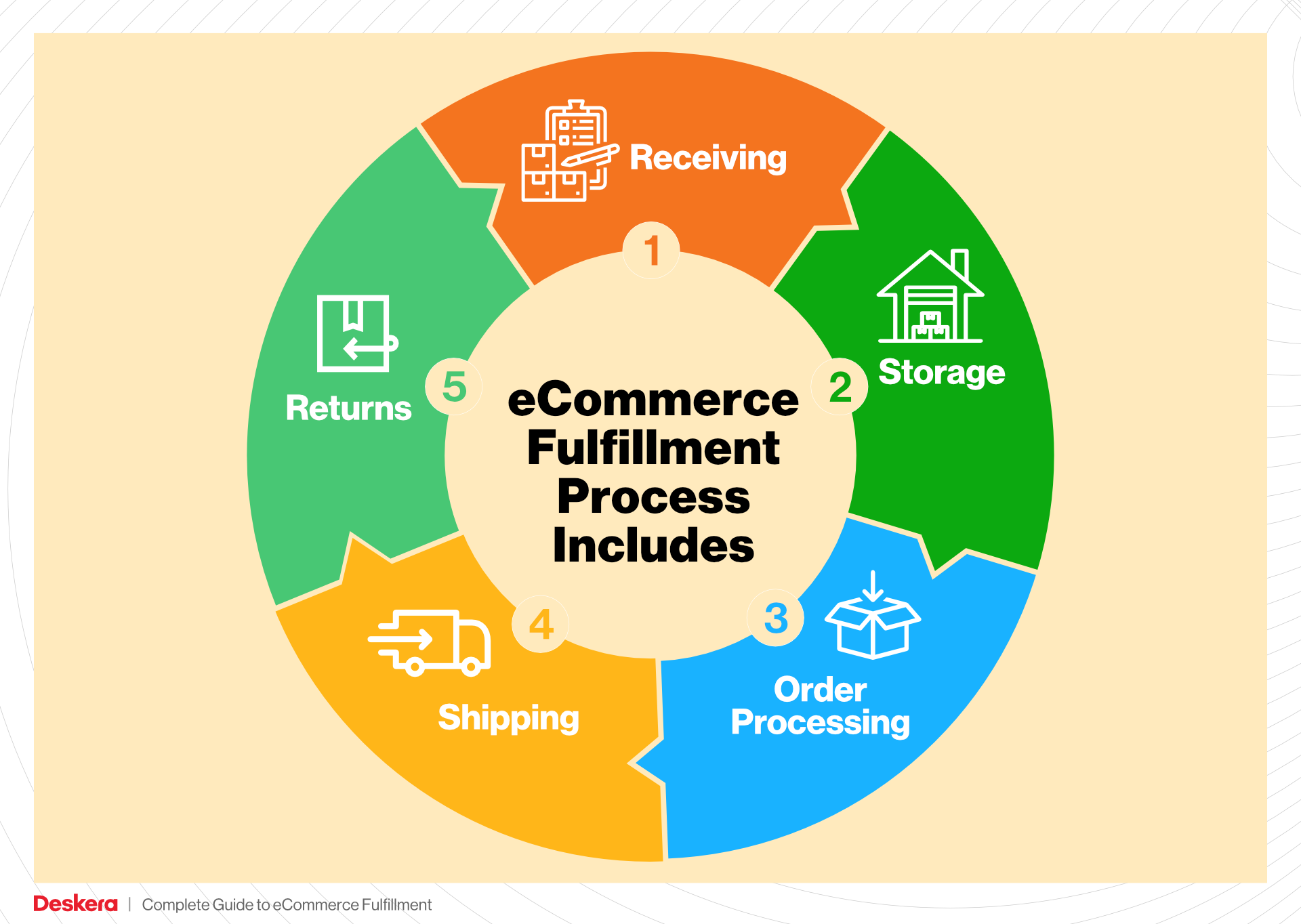
Empowering Smart Decisions
Our goal is to empower your business to make smart, informed decisions about logistics and fulfillment. By navigating the complexities of e-commerce fulfillment with confidence, you can focus on what truly matters: growing your business and delighting your customers. Whether you’re just starting or scaling your operations, this guide will serve as a valuable resource in your journey toward fulfillment excellence.
What You’ll Learn In This Guide
- What is E-commerce Fulfillment? An Introduction for Growing Businesses
- The Order Fulfillment Process: From ‘Buy’ Button to Customer’s Door
- Comparing Fulfillment Models: In-House vs. 3PL vs. Dropshipping
- A Deep Dive into Amazon FBA: Pros, Cons, and Who It’s For
- Core Services Offered by Fulfillment Centers
- How to Choose a Fulfillment Partner: A 6-Point Checklist
- Understanding Fulfillment Pricing: A Breakdown of Common Fees
- Frequently Asked Questions (FAQs) about Fulfillment
- Conclusion: Is Outsourcing Fulfillment the Right Move for Your Business?
- Important Disclaimer
The Order Fulfillment Process: From ‘Buy’ Button to Customer’s Door
1. Receiving Inventory
The first step in the order fulfillment process is receiving inventory. When products arrive at the distribution center, they must be checked for accuracy and quality. This involves confirming that the shipment matches the purchase order and inspecting items for damage. Each product is assigned a Stock Keeping Unit (SKU), which is a unique identifier that helps track inventory levels and manage stock efficiently.
Why is this step important? Accurate receiving is crucial for maintaining inventory integrity. Errors at this stage can lead to stock discrepancies, which can affect order fulfillment later on. By ensuring that the right products are received in good condition, businesses can avoid delays and customer dissatisfaction.
2. Warehouse Storage
Once inventory is received and verified, the next step is warehouse storage. This process involves organizing products in a manner that optimizes space and facilitates efficient retrieval. Products are typically stored based on their SKU, which is essential for maintaining an organized inventory system. This organization can take various forms, such as pallet racking for bulk items or shelving for smaller products.
The importance of effective warehouse storage cannot be overstated. A well-organized warehouse enhances picking efficiency, reduces search time, and minimizes the risk of errors during the order fulfillment process. Additionally, using technology like Warehouse Management Systems (WMS) can streamline storage operations by automating stock updates and providing real-time inventory visibility.
3. Order Picking
The third step in the fulfillment process is order picking, where items are retrieved from their storage locations to fulfill customer orders. This step often utilizes pick lists, which are generated based on incoming orders. A pick list details the items needed, their locations, and the quantities required, allowing warehouse staff to efficiently gather products.
Effective order picking is vital for maintaining a fast order turnaround time. The quicker items are picked, the sooner they can be packed and shipped, ultimately enhancing customer satisfaction. Implementing strategies such as batch picking (picking multiple orders simultaneously) or zone picking (assigning workers to specific areas of the warehouse) can improve picking efficiency significantly.
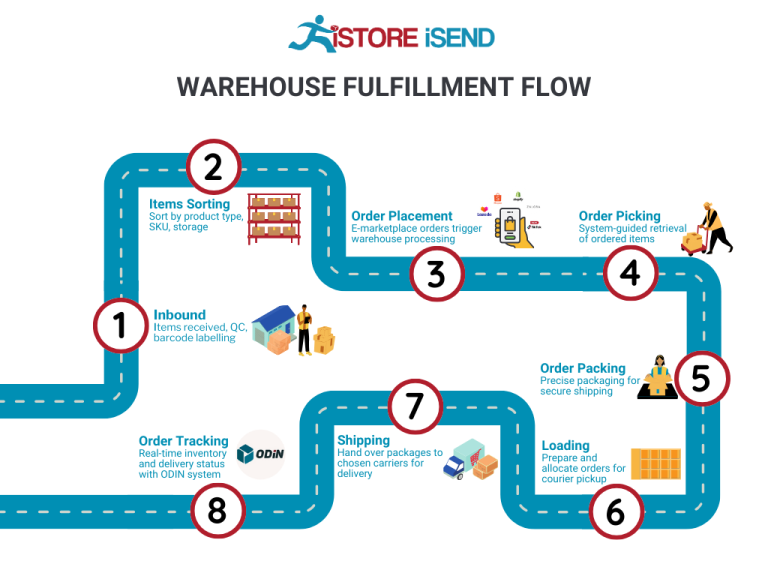
4. Order Packing
After items are picked, the next step is order packing. This involves carefully packaging the selected products to ensure they arrive at the customer’s door in perfect condition. Packing materials, such as boxes, bubble wrap, and packing peanuts, are chosen based on the items’ fragility and size. Accurate packing slips are also included to provide customers with order details.
Packing is essential for reducing the likelihood of damage during transit and ensuring customer satisfaction. A well-packed order reflects professionalism and care, which can enhance brand loyalty. Additionally, utilizing packing optimization techniques can reduce shipping costs by minimizing the size of the package while still protecting its contents.
5. Shipping & Delivery
The final step in the order fulfillment process is shipping and delivery. Once an order is packed, it is labeled and handed over to a shipping carrier, such as UPS, FedEx, or USPS. This step involves generating shipping labels and tracking numbers, which are crucial for providing customers with real-time updates on their order status.
Shipping and delivery are critical for customer satisfaction. Fast and reliable shipping can set a business apart in a competitive e-commerce landscape. Offering multiple shipping options—like expedited or standard shipping—can cater to different customer needs. Moreover, integrating technology such as tracking systems allows businesses to monitor shipments and address any issues proactively, ensuring a smooth delivery experience for the customer.
In summary, mastering the order fulfillment process is key to scaling your e-commerce business. By understanding each step—from receiving inventory to shipping and delivery—you can implement best practices that enhance efficiency, accuracy, and customer satisfaction.
Comparing Fulfillment Models: In-House vs. 3PL vs. Dropshipping
Fulfillment Model Comparison
| Model | Who Handles Inventory | Best For (Business Stage) | Key Advantage | Key Disadvantage |
|---|---|---|---|---|
| In-House Fulfillment | Business Owner/Staff | Startups to Established Businesses | Full control over inventory and operations | High overhead costs and resource-intensive |
| Third-Party Logistics (3PL) | 3PL Provider | Growing Businesses | Scalable services with expertise | Less control over inventory and processes |
| Dropshipping | Supplier/Vendor | Startups and New Entrepreneurs | Low upfront investment and risk | Lower profit margins and dependency on suppliers |
In-House Fulfillment
In-house fulfillment involves managing all aspects of inventory handling and order processing internally. This model is ideal for businesses that have the resources and expertise to handle logistics themselves, allowing for complete control over inventory management, order processing, and customer service. Typically, this is more feasible for established companies with sufficient volume to justify the investment in warehouse space, staff, and technology. The key advantage of in-house fulfillment is the ability to maintain direct oversight over operations, which can enhance customer experience through tailored services and quicker response times. However, the disadvantages are significant; maintaining an in-house operation can lead to high overhead costs, including labor, storage, and equipment, making it resource-intensive, especially for startups and small businesses.
Third-Party Logistics (3PL)
Third-party logistics (3PL) providers offer comprehensive logistics services, including warehousing, order fulfillment, and shipping, allowing businesses to outsource their logistics needs. This model is particularly beneficial for growing businesses that require scalable solutions without the burden of managing logistics operations themselves. By partnering with a 3PL like Averitt, businesses can leverage the provider’s expertise, technology, and infrastructure to enhance their supply chain efficiency. The key advantage of using a 3PL is the flexibility and scalability it provides; businesses can easily adjust their logistics operations in response to seasonal fluctuations or growth. However, a notable disadvantage is the reduced control over inventory and fulfillment processes, which may lead to challenges in maintaining quality and customer service standards. Businesses must ensure that their chosen 3PL aligns with their operational goals and standards.
Dropshipping
Dropshipping is a fulfillment model where the retailer does not keep products in stock but instead transfers customer orders directly to a supplier, who then ships the products directly to the customer. This model is particularly appealing to startups and new entrepreneurs because it requires minimal upfront investment and eliminates the risks associated with holding inventory. The key advantage of dropshipping is the low barrier to entry, allowing businesses to focus on marketing and sales without the complexities of inventory management. However, dropshipping also presents significant challenges, such as lower profit margins and reliance on suppliers for inventory management and fulfillment. Issues such as product availability and shipping delays can negatively impact customer satisfaction and brand reputation, making it crucial for businesses to choose reliable suppliers and maintain clear communication with customers.
Conclusion
Each fulfillment model has its unique advantages and challenges, making it essential for e-commerce business owners and operations managers to carefully evaluate their specific needs, resources, and growth goals when deciding on a fulfillment strategy. In-house fulfillment offers control and customization but at a high cost, while 3PL providers offer expertise and scalability with less control. Dropshipping minimizes upfront investment but can lead to lower profit margins and quality concerns. By understanding these dynamics, businesses can better position themselves for efficient operations and customer satisfaction as they scale.
A Deep Dive into Amazon FBA: Pros, Cons, and Who It’s For
What is Fulfillment by Amazon (FBA)?
Fulfillment by Amazon (FBA) is a service provided by Amazon that allows e-commerce sellers to store their products in Amazon’s fulfillment centers. Amazon then takes care of storage, packaging, and shipping of these products directly to customers. This system is designed to streamline the logistics process for sellers, allowing them to focus more on growing their business rather than managing the complexities of order fulfillment.
When a customer orders a product, Amazon handles the entire fulfillment process, including customer service and returns. This means that sellers can leverage Amazon’s extensive distribution network and logistics expertise, providing a seamless shopping experience for customers. Moreover, FBA products are eligible for Amazon Prime, which can significantly enhance visibility and sales potential.
How Does FBA Work?
-
Set Up Your FBA Account: Sellers start by creating an FBA account within their existing Amazon Seller Central account.
-
Create Product Listings: Once the account is set up, sellers can create product listings for the items they want to sell.
-
Ship Products to Amazon: Sellers package their products according to Amazon’s guidelines and ship them to Amazon’s designated fulfillment centers.
-
Storage: The products are stored in Amazon’s warehouses until they are sold.
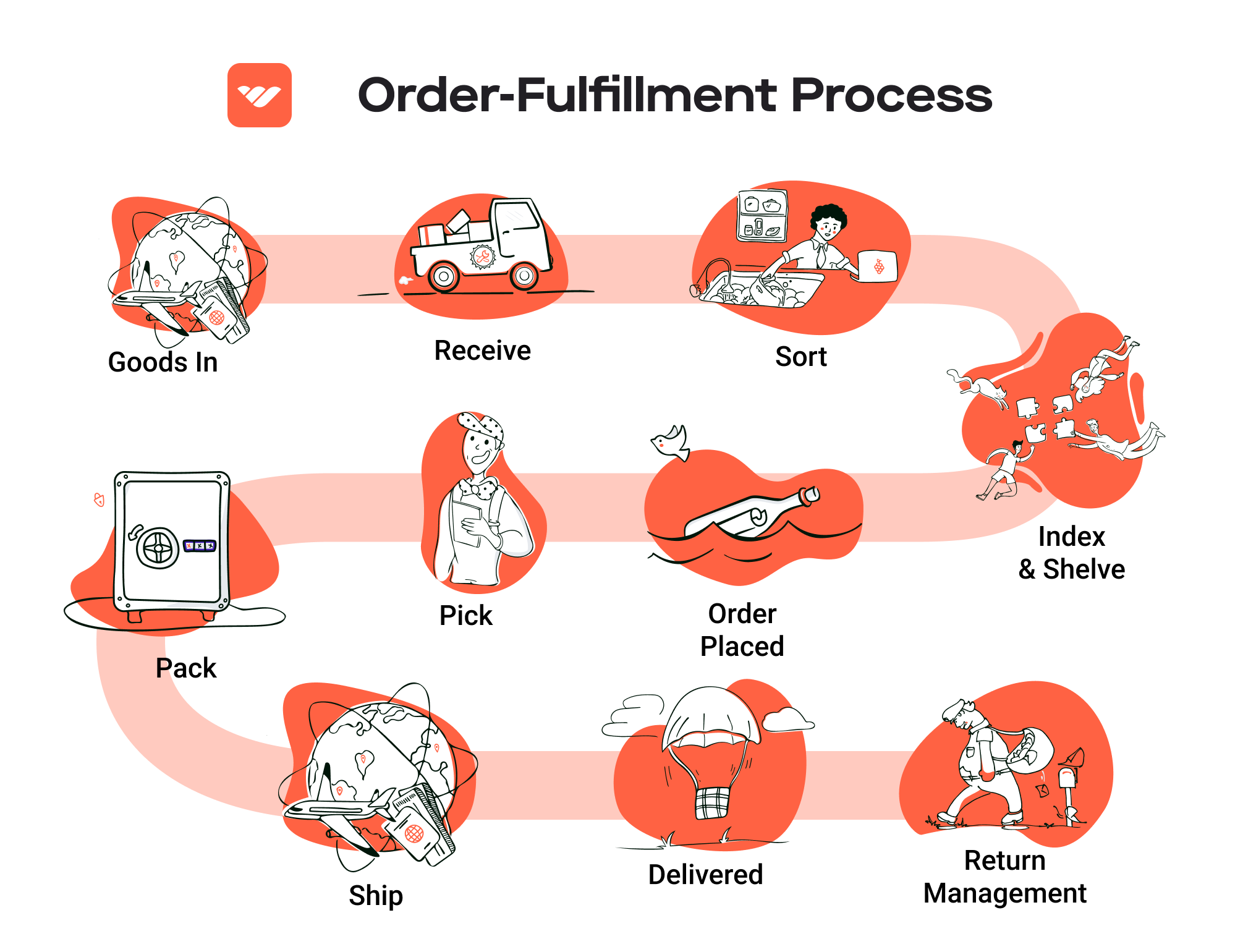
-
Order Processing: When a customer makes a purchase, Amazon picks, packs, and ships the product on behalf of the seller.
-
Customer Service and Returns: Amazon also handles customer inquiries and manages returns for FBA products, ensuring a hassle-free experience for both sellers and buyers.
Pros of Using FBA
-
Prime Eligibility: FBA products are automatically eligible for Amazon Prime, which can significantly boost sales. Prime members often prefer Prime-eligible products due to faster shipping options.
-
Customer Trust: Products fulfilled by Amazon benefit from the trust associated with the Amazon brand. Customers are more likely to purchase items that are backed by Amazon’s customer service and return policies.
-
Multi-Channel Fulfillment: FBA can be used to fulfill orders from other sales channels, such as eBay or a seller’s own website. This flexibility helps sellers manage their inventory efficiently across multiple platforms.
-
Scalability: FBA allows sellers to scale their businesses without the need for significant investment in logistics infrastructure. As sales grow, Amazon can handle increased order volumes seamlessly.
-
Time Savings: By outsourcing fulfillment to Amazon, sellers can focus on marketing, product development, and customer engagement rather than the logistics of shipping and handling.
Cons of Using FBA
-
High Fees: FBA fees can be substantial, including storage fees for unsold inventory and fulfillment fees per unit sold. Sellers must carefully calculate these costs to ensure profitability.
-
Strict Inventory Rules: Amazon has stringent inventory management policies. Sellers must adhere to strict guidelines regarding labeling, packaging, and storage, which can be cumbersome and time-consuming.
-
Commingling Risks: FBA allows for commingling of inventory, meaning that products from different sellers can be stored together. This can lead to issues with product quality and returns, as sellers cannot guarantee that their specific inventory will be shipped to customers.
-
Limited Control Over Branding: Sellers have limited control over packaging and branding when using FBA. Amazon’s standard packing can dilute brand identity, which may be a concern for some businesses.
-
Dependency on Amazon: Relying on FBA can create a dependency on Amazon’s platform. Changes in Amazon’s policies or algorithms can directly impact a seller’s business.
Who is FBA Best For?
Fulfillment by Amazon is ideally suited for:
-
Small to Medium-Sized Businesses: Sellers who do not have the resources or infrastructure to manage their own logistics can benefit greatly from FBA’s comprehensive services.
-
Brands Looking to Scale: Businesses aiming to grow their sales quickly can leverage FBA’s vast distribution network to reach a larger audience without the overhead of managing fulfillment.
-
Sellers with Seasonal Products: FBA is an excellent option for sellers with fluctuating sales patterns, as it allows them to scale storage and fulfillment up or down based on demand.
-
Entrepreneurs Focused on Marketing: Sellers who want to concentrate on marketing and product development rather than logistics can find FBA to be a valuable tool in their operational strategy.
-
Multi-Channel Sellers: Businesses that sell on multiple platforms can streamline their order fulfillment processes by using FBA for all sales channels, ensuring a consistent customer experience.
In conclusion, Fulfillment by Amazon offers a powerful solution for e-commerce sellers looking to simplify their logistics and enhance their sales potential. However, it’s essential to weigh the pros and cons carefully and determine whether FBA aligns with your business goals and operational capabilities.
Core Services Offered by Fulfillment Centers
Inventory Management & Warehousing
Inventory management and warehousing are foundational services provided by fulfillment centers, ensuring that e-commerce businesses can efficiently store and manage their stock. This process involves receiving, storing, and tracking inventory levels using advanced Warehouse Management Systems (WMS).
For e-commerce businesses, effective inventory management is crucial. It allows for real-time visibility into stock levels, helping to prevent both overstocking and stockouts. A robust inventory management system can integrate seamlessly with various e-commerce platforms, such as Shopify, enabling business owners to automate inventory updates and optimize order fulfillment processes.
The benefits of effective inventory management and warehousing include reduced holding costs, improved order accuracy, and enhanced customer satisfaction. When inventory is organized and managed effectively, businesses can respond quickly to market demands, ensuring that products are available when customers want them. Furthermore, well-managed warehousing can minimize the risks associated with lost or damaged goods, ultimately leading to improved profitability.
Pick and Pack Services
Pick and pack services are integral to the fulfillment process, where individual items are selected from inventory (picked) and packaged for shipment (packed). This service is essential for e-commerce businesses that require precision and speed in fulfilling customer orders.
The pick and pack process typically involves several steps: receiving the order, locating the items in the warehouse, picking them, and then packing them securely for shipment. Fulfillment centers often utilize technology, such as barcode scanning and automated packing solutions, to enhance efficiency and accuracy during this process.
For e-commerce businesses, the benefits of utilizing pick and pack services include faster order turnaround times and increased order accuracy. Quick and accurate fulfillment leads to higher customer satisfaction and loyalty, which are critical factors in today’s competitive online marketplace. Additionally, outsourcing pick and pack services to a fulfillment center allows businesses to focus on their core competencies, such as marketing and product development, rather than the logistical complexities of order fulfillment.
Kitting and Assembly
Kitting and assembly services involve grouping together multiple items into a single package or assembling products before shipment. This service is particularly useful for businesses that sell products that require assembly or that wish to offer bundled products, such as gift sets or promotional packages.
Fulfillment centers equipped with kitting and assembly capabilities can streamline the process of preparing complex orders. This involves not only packaging but also assembling items according to specific customer requirements. For instance, a company that sells furniture may need to have various components of a product assembled before shipping.
The benefits of kitting and assembly services for e-commerce businesses include enhanced product offerings and improved operational efficiency. By providing pre-assembled or bundled products, businesses can attract more customers and increase average order values. Additionally, these services reduce the time spent on order preparation, allowing for quicker shipping and improved customer satisfaction.
Returns Management (Reverse Logistics)
Returns management, or reverse logistics, is a critical service offered by fulfillment centers, particularly for e-commerce businesses where return rates can be significant. This service involves handling the return process, from receiving returned items to restocking them or disposing of them appropriately.
A well-structured returns management system is essential for maintaining customer satisfaction and loyalty. When customers know they can easily return products, they are more likely to make a purchase. Fulfillment centers often provide streamlined processes for handling returns, including inspection, sorting, and updating inventory records.
The benefits of effective returns management include reduced processing times and enhanced customer experiences. A responsive returns process can turn a potentially negative experience into a positive one, leading to repeat business. Furthermore, efficient reverse logistics can minimize losses associated with returned merchandise, ensuring that businesses can recover as much value as possible from returned products.
In conclusion, the core services offered by fulfillment centers, such as inventory management and warehousing, pick and pack services, kitting and assembly, and returns management, play a vital role in the success of e-commerce businesses. By leveraging these services, business owners can streamline their operations, enhance customer satisfaction, and ultimately scale their sales and logistics effectively.
How to Choose a Fulfillment Partner: A 6-Point Checklist
Location & Warehouse Network
When selecting a fulfillment partner, the location of their warehouses plays a crucial role in your logistics efficiency. Ideally, your partner should have facilities near your customer base to minimize shipping times and costs.
Questions to Ask:
– How many fulfillment centers do you operate, and where are they located?
– Can you handle shipping to my target markets effectively from your locations?
– What is your average shipping time to major regions?
A strategically located warehouse network can significantly enhance your service levels and customer satisfaction, providing you with a competitive edge.
Technology & Integrations
In today’s e-commerce landscape, technology is a vital component of efficient fulfillment operations. Your fulfillment partner should utilize advanced Warehouse Management Systems (WMS) that can integrate seamlessly with your existing inventory management and e-commerce platforms, such as Shopify or WooCommerce.
Questions to Ask:
– What technology do you use to manage inventory and orders?
– Can your system integrate with my existing software and platforms?
– How do you ensure real-time visibility of inventory and order status?
Effective technology integration not only streamlines operations but also provides you with critical insights into your supply chain, helping you make informed decisions.
Specializations (e.g., Cold Storage, Oversized Items)
Depending on the nature of your products, it’s essential to assess whether your fulfillment partner has the necessary specializations. For instance, if you sell perishable goods, look for partners with cold storage capabilities. If you deal with oversized items, ensure they have the infrastructure to handle such products.
Questions to Ask:
– Do you have specialized services for my product type (e.g., cold storage, fragile items)?
– What equipment and processes do you have in place to handle these specializations?
– Can you provide case studies or references for similar products you’ve handled?
Choosing a partner with the right specializations can prevent damage to your products and ensure compliance with industry regulations.
Scalability & Capacity
As your business grows, your fulfillment needs will evolve. It’s critical to partner with a fulfillment provider that can scale alongside your business. This includes both the physical capacity to handle increased volume and the flexibility to adapt to seasonal fluctuations.
Questions to Ask:
– How do you manage capacity during peak seasons?
– What is your process for scaling operations if my order volume increases?
– Can you accommodate fluctuations in inventory levels throughout the year?
A scalable fulfillment partner will help you avoid bottlenecks and ensure that you can meet customer demand efficiently.
Pricing and Contracts
Understanding the pricing structure and contract terms of your fulfillment partner is vital to maintaining profitability. Be wary of hidden fees and ensure that the pricing model aligns with your business goals.
Questions to Ask:
– What is your pricing structure? Are there any additional fees I should be aware of?
– How do you handle pricing adjustments as my order volume changes?
– What are the terms of the contract, and is there flexibility for renegotiation?
A transparent pricing model allows you to budget effectively and avoid unexpected costs that could impact your bottom line.
Customer Support & Reviews
Lastly, exceptional customer support can make a significant difference in your fulfillment operations. A responsive and knowledgeable support team can help resolve issues quickly, minimizing disruptions to your business.
Questions to Ask:
– What type of customer support do you offer (e.g., dedicated account manager, 24/7 support)?
– Can you provide references or testimonials from current clients?
– How do you handle problems or delays in fulfillment?
Researching customer reviews and feedback can provide insight into how well the partner manages relationships and resolves issues, ensuring that you choose a partner committed to your success.
Conclusion
Selecting the right fulfillment partner is a critical decision that can significantly impact your e-commerce business’s efficiency and growth potential. By carefully considering these six factors—Location & Warehouse Network, Technology & Integrations, Specializations, Scalability & Capacity, Pricing and Contracts, and Customer Support & Reviews—you can make an informed choice that aligns with your business needs. By asking the right questions and assessing your potential partner’s capabilities, you’ll be better positioned to scale your operations and enhance your customer experience effectively.
Understanding Fulfillment Pricing: A Breakdown of Common Fees
Initial Setup Fees
Initial setup fees are typically charged when you first establish your relationship with a fulfillment center. These fees cover the costs associated with onboarding your business, which may include account setup, system integration, and initial inventory setup. The fee can vary based on the complexity of your operations, the volume of products, and the level of customization required.
Calculating initial setup fees often involves a flat rate plus any additional costs for specific services, such as software integration with your existing inventory management systems. For example, if you are integrating with popular platforms like Shopify or WooCommerce, the fulfillment center may charge extra for the technical support required during this process.
Receiving Fees
Receiving fees are charged when your inventory arrives at the fulfillment center. This fee covers the labor and equipment required to unload, inspect, and store your products. The calculation for receiving fees can depend on several factors, such as the volume of goods being received and the time it takes to process those goods.
Typically, receiving fees are charged per shipment or by weight/volume. For instance, if you send a large shipment of multiple pallets, the fee may be calculated based on the total weight or number of pallets. It’s crucial to understand these costs upfront, especially if your inventory fluctuates in size and complexity.
Storage Fees (per pallet/bin)
Storage fees are ongoing charges for keeping your inventory in the fulfillment center’s warehouse. These fees are usually calculated on a per pallet or per bin basis, depending on how your products are organized within the facility.
Storage fees can vary significantly based on several factors:
– Location: Warehouses in urban areas typically charge higher rates due to demand.
– Space Utilization: Efficient use of space can lower your costs. If you have a lot of small items, storing them in bins may be more economical than using pallets.
– Seasonality: Some fulfillment centers offer flexible storage options, allowing you to scale your storage needs up or down based on seasonal demand.
Understanding how storage fees are calculated will help you manage your inventory levels effectively and avoid unnecessary costs.
Pick & Pack Fees (per item/order)
Pick and pack fees are charged for the labor involved in selecting items from your inventory and preparing them for shipment. This fee is typically calculated on a per item or per order basis.
For example, if you receive an order consisting of five different items, the fulfillment center may charge you for picking each item individually and then packing them into a single shipment. Some fulfillment centers offer tiered pricing models, where the cost per item decreases as the volume of orders increases, incentivizing businesses to scale their operations.
Additionally, special handling requests, such as gift wrapping or custom packaging, may incur extra fees, so it’s essential to clarify these details with your fulfillment partner.
Shipping Fees
Shipping fees are the costs associated with delivering your products to customers. These fees can vary widely based on several factors, including:
– Shipping Method: Options can range from standard ground shipping to expedited services.
– Destination: Shipping costs will vary based on the distance from the fulfillment center to the customer’s location.
– Package Size and Weight: Larger and heavier packages will generally incur higher shipping fees.
Most fulfillment centers will work with multiple carriers (such as UPS, FedEx, and USPS) to provide you with the best shipping rates. Understanding how shipping fees are calculated can help you plan your pricing strategy and improve your margins.
Conclusion: Tips for Getting an Accurate Quote
When seeking an accurate quote from a fulfillment center, consider the following tips:
-
Provide Detailed Information: Share specifics about your inventory, order volume, and fulfillment needs. The more information you provide, the more accurate the quote will be.
-
Ask About All Fees: Ensure you understand all potential fees, including hidden costs that may arise during peak seasons or for special services.
-
Evaluate Pricing Models: Different fulfillment centers may use various pricing models. Compare how fees are structured to find the best fit for your business.
-
Negotiate Terms: Don’t hesitate to negotiate pricing, especially if you plan to scale your operations. Many fulfillment centers are open to offering discounts for long-term contracts or high volume.
-
Consider Flexibility: Look for partners who offer flexible pricing and services that can adapt to your changing business needs.
By following these tips, you can ensure a smoother onboarding experience and better cost management as you scale your e-commerce operations.
Frequently Asked Questions (FAQs) about Fulfillment
1. What is a fulfillment center?
A fulfillment center is a specialized warehouse that handles the storage, packaging, and shipping of products directly to customers. Unlike traditional warehouses, which primarily focus on storing goods, fulfillment centers are designed to support e-commerce businesses by managing order processing and logistics efficiently.
2. What’s the difference between a warehouse and a fulfillment center?
The primary difference lies in their functions. A warehouse is primarily focused on storing inventory, while a fulfillment center is equipped to process orders, pack items, and ship them directly to customers. Fulfillment centers often have advanced technology for inventory management and faster shipping solutions, catering specifically to the needs of e-commerce businesses.
3. What is a 3PL?
A 3PL, or third-party logistics provider, is a company that offers outsourced logistics services, including warehousing, fulfillment, and shipping. Partnering with a 3PL like Averitt allows businesses to leverage expertise in logistics management, reduce operational costs, and focus on core business activities, such as marketing and product development.
4. How much do fulfillment services cost?
The cost of fulfillment services can vary based on several factors, including the volume of orders, the complexity of the fulfillment process, and the specific services required (like packing, shipping, and returns management). Averitt provides customized quotes based on your unique needs, ensuring you receive a tailored solution that aligns with your budget.
5. How does Averitt ensure order accuracy?
Averitt employs advanced warehouse management systems (WMS) that integrate with your inventory management software. This technology allows for real-time inventory tracking and order processing, reducing the likelihood of errors. Additionally, our trained staff conducts regular audits and quality checks to maintain high accuracy levels in order fulfillment.
6. Can Averitt handle seasonal fluctuations in inventory?
Yes, Averitt offers flexible warehousing solutions that can scale up or down according to your seasonal inventory needs. Whether you experience peak sales during holidays or product launches, our facilities can adjust space allocations to ensure your products are always ready for fulfillment.
7. What shipping options does Averitt provide?
Averitt offers a wide range of shipping options, including small parcel services through carriers like UPS, FedEx, and USPS, as well as larger freight solutions such as LTL (Less Than Truckload) and full truckload shipping. This comprehensive approach allows businesses to choose the most cost-effective and timely shipping method for their products.
8. How does Averitt handle returns?
Averitt provides efficient returns management services, which include processing return requests, inspecting returned items, and restocking inventory as needed. This streamlined process ensures that your customers have a hassle-free experience, which can enhance customer satisfaction and loyalty.
9. What technology does Averitt use in its fulfillment centers?
Averitt utilizes advanced warehouse management systems (WMS) that enhance inventory visibility and order tracking. This technology integrates seamlessly with various e-commerce platforms, allowing for real-time updates on stock levels and order statuses, which is crucial for effective inventory management.
10. How can I get started with Averitt’s fulfillment services?
To get started, you can contact Averitt’s Distribution and Fulfillment Team at 1-877-339-3530 or via email. Our team will work with you to understand your specific needs and provide a customized fulfillment strategy that aligns with your business goals. You can also request a quote to explore service options tailored to your requirements.
Conclusion: Is Outsourcing Fulfillment the Right Move for Your Business?
Evaluating the Benefits of Outsourcing Fulfillment
Outsourcing your fulfillment operations can be a transformative decision for your e-commerce business. By partnering with a specialized fulfillment service like Averitt, you can significantly save time. This allows you to redirect your focus toward critical business areas such as marketing and product development, rather than getting bogged down in logistical challenges.
Scalability is another key advantage. As your business grows, so do your fulfillment needs. A flexible fulfillment partner can adjust to seasonal demand fluctuations or sudden spikes in orders without the need for you to invest in additional infrastructure or workforce. This agility ensures that you can meet customer expectations without compromising service quality.
Moreover, leveraging the expertise of a dedicated fulfillment provider can enhance your operational efficiency. With advanced technology such as warehouse management systems (WMS) and a deep understanding of logistics, a fulfillment partner can optimize your inventory management and shipping processes, leading to faster delivery times and improved customer satisfaction.
However, the success of this strategy hinges on selecting the right partner. It is crucial to assess potential fulfillment providers not only for their capabilities but also for their alignment with your business goals. The right partner will not only facilitate growth but will also become an integral part of your operational strategy.
To determine if outsourcing fulfillment is the right move for you, consider conducting a thorough audit of your current shipping process. Evaluate aspects such as cost, time, and customer feedback. This analysis will provide insights into whether a fulfillment partner could enhance your operational efficiency and support your growth trajectory.
Take Action
Are you ready to streamline your operations and focus on scaling your business? Start by auditing your shipping and fulfillment processes today. This could be the first step toward a more efficient and profitable future.
Important Disclaimer
⚠️ Important Disclaimer
The information in this guide is for educational purposes. Fulfillment services, pricing, and platform features change frequently. Always conduct your own due diligence and consult with providers directly before making business decisions.
